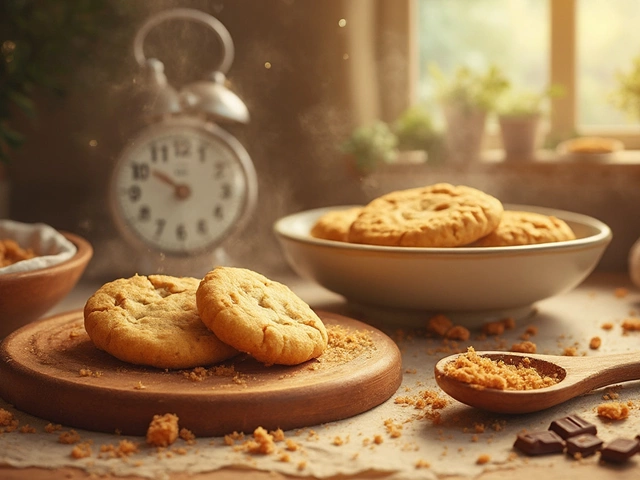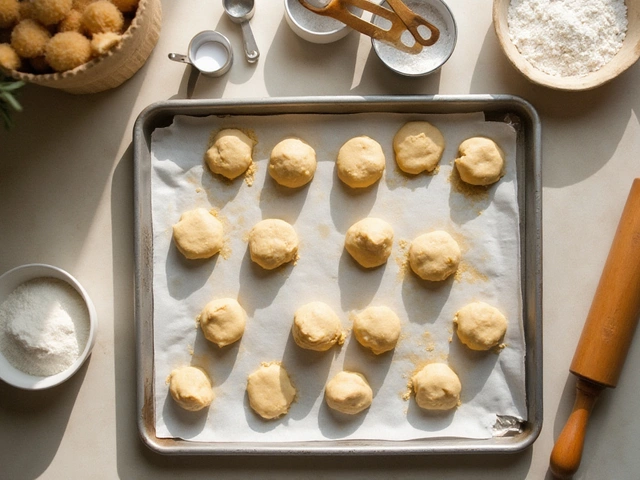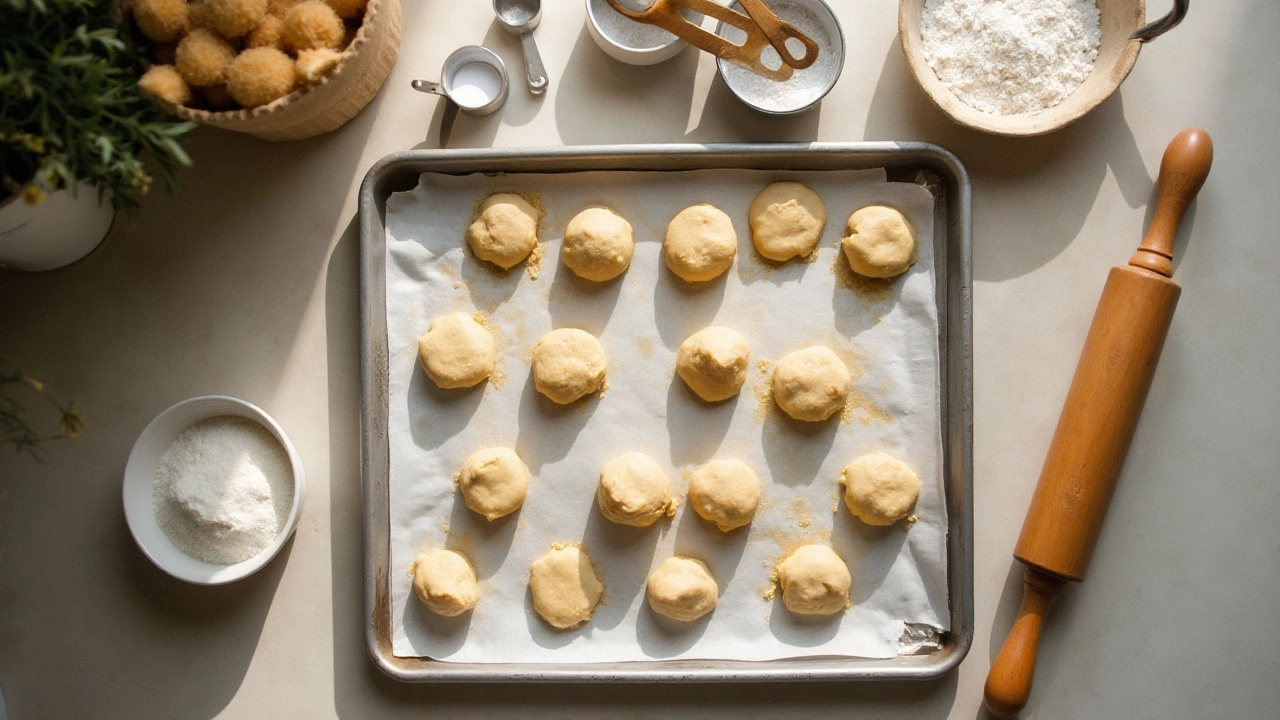
When it comes to baking cookies, the decision to flatten them before they hit the oven can make all the difference. If you've ever pondered over your dough, trying to predict the outcome, this article is for you. Whether you're a fan of soft, pillowy mounds or thin, crispy delights, understanding the impact of flattening is key.
Baking isn't just about following recipes—it's an art form where little tweaks can change the entire experience. This guide reveals the subtle science behind cookie flattening, helping you take control of your results. Let us walk through different cookie types where flattening your dough before baking may or may not be the best choice.
- The Science Behind Cookie Flattening
- Types of Cookies and When to Flatten
- Techniques for Perfect Cookie Texture
- Troubleshooting Common Cookie Issues
The Science Behind Cookie Flattening
Cookie baking, often regarded as a delightful symphony of flour, butter, and sugar, transforms into a fascinating scientific dance when we consider the decision to flatten cookies. At the heart of this decision lies a series of reactions that unfold within the oven's warm embrace. The act of flattening cookies can influence the Maillard reaction—a crucial chemical reaction in baking that gives cookies their signature golden-brown hue and complex flavors. This reaction occurs when amino acids and sugar combine, and it relies significantly on the surface area of the dough, meaning a flatter cookie might browner and develop more pronounced flavors.
Another key factor intertwining with the choice to flatten is the baking temperature and dough composition. When a cookie is flattened, the greater surface area promotes faster spreading. This occurs due to the butter melting at a different rate, especially if the dough is cold when it enters the oven. This spread alters the cookie's texture, transforming it from thick and chewy to a potentially crispy delight. In essence, the molecular dance between melting fats and evaporating moisture needs careful consideration and understanding to control the final product. A cookie’s thickness—or lack thereof—stems directly from the balance of these intricate processes.
According to Shirley Corriher, a food scientist known for her expertise in baking, "The tendency of a cookie to spread or not is really a balance between fat melting and the stiffness of the dough."
Her insight highlights how minute adjustments in the cookie's initial condition can culminate in a markedly different result. Adding more flour increases the dough stiffness and offers structural stability, reducing spread, while extra sugar can have the opposite effect by liquefying more swiftly under heat.
Exploring cookie flattening also touches upon the role of leavening agents like baking powder or baking soda. Their function goes beyond just enlarging the cookie—they create tiny air pockets. However, for these agents to achieve their magic, the correct environment needs cultivation, including the appropriate dough thickness. Flattening provides a uniform medium through which carbon dioxide can easily disperse, thus ensuring even rise and crumb texture throughout. Understanding this interplay can enable bakers to predict how different ingredients might react in the oven and adjust accordingly.
Ultimately, whether you flatten your homemade cookies or not involves weighing the desire for structure against flavor intensity and visual appeal. Different types of cookies benefit from unique approaches; for instance, while you might press a delicate shortbread to preserve its crumbliness, a hearty oatmeal cookie could retain its shapely mound to avoid undue crispiness. Scientists and bakers alike continue to delve into these dynamics, uncovering new layers of creativity and precision within the kitchen’s realm.
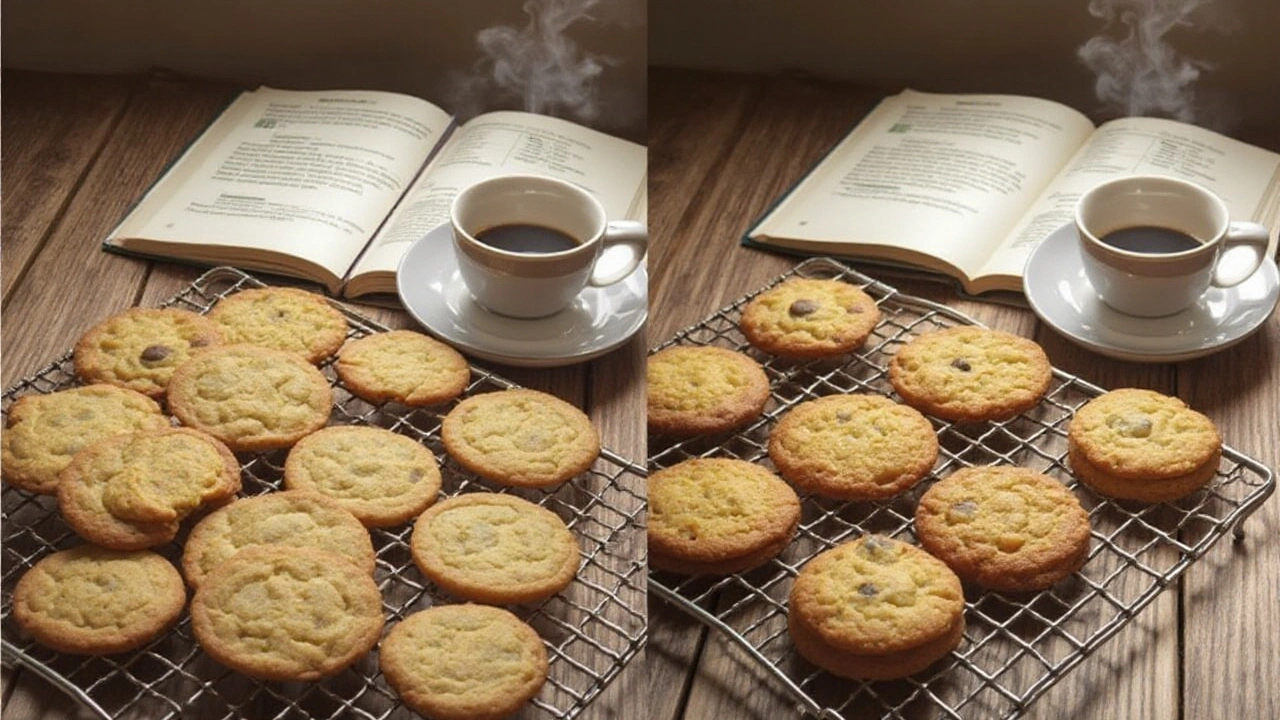
Types of Cookies and When to Flatten
Embarking on a cookie-baking journey requires a deep understanding of various cookie types and their unique characteristics. The choice to flatten or not flatten can dictate the final outcome of your cookies, giving them a defined texture and shape. Let's explore some common cookie varieties and see how flattening might just be the secret to unlocking their deliciousness. Take the classic chocolate chip cookie, for example. If you prefer a thin, crispy edge with a chewy center, gently pressing down each ball of dough before baking is your golden ticket. This method allows the heat to evenly distribute across the cookie, creating a wonderful contrast in textures.
On the contrary, if you're aiming for a cookie that’s more like a cloud, think twice before you flatten. Items like sugar cookies or snickerdoodles often fall into this category. Keeping them as small, rounded mounds results in a thicker, softer interior as they rise in the oven. Personal preferences aside, understanding hydration levels in your dough is key. A wetter dough, such as that for oatmeal or molasses cookies, may spread on its own. In these cases, flattening is unnecessary unless you're going for an extra crispy finish.
Another consideration in the lovely world of homemade cookies is the impact of ingredient variables like butter and sugar. Butter-heavy recipes, like shortbread or butter cookies, will naturally spread more due to the fat content. Here, you may choose to skip flattening altogether if you want to maintain some thickness. Conversely, sugar-laden cookie dough tends to flatten and crack, especially if you're using white sugar, which promotes more spread and a crisper texture. One baking enthusiast once claimed,
"A cookie's destiny begins with the baker's hand. Touch the dough too much, and you've altered its fate."
For those venturing into uncharted territories, such as the world of non-traditional cookies like macarons or meringues, flattening doesn't even come into play. These delicate treats rely more on their airy, structured forms, demanding precision and a surprising lack of interference during preparation. Each category of cookie presents its own set of guidelines and culinary nuances. With a better grasp on ideal flattening techniques, you can experiment with confidence, transforming your kitchen into a lab of delectable experiments.
Let's wrap up with a handy table that summarizes optimal flattening strategies for various types of cookies:
| Cookie Type | Flatten Before Baking? |
|---|---|
| Chocolate Chip | Yes, for a flatter, crispy edge |
| Sugar Cookie | No, maintain the mound |
| Oatmeal Cookie | Optional, depending on desired texture |
| Shortbread | No, let natural spread occur |
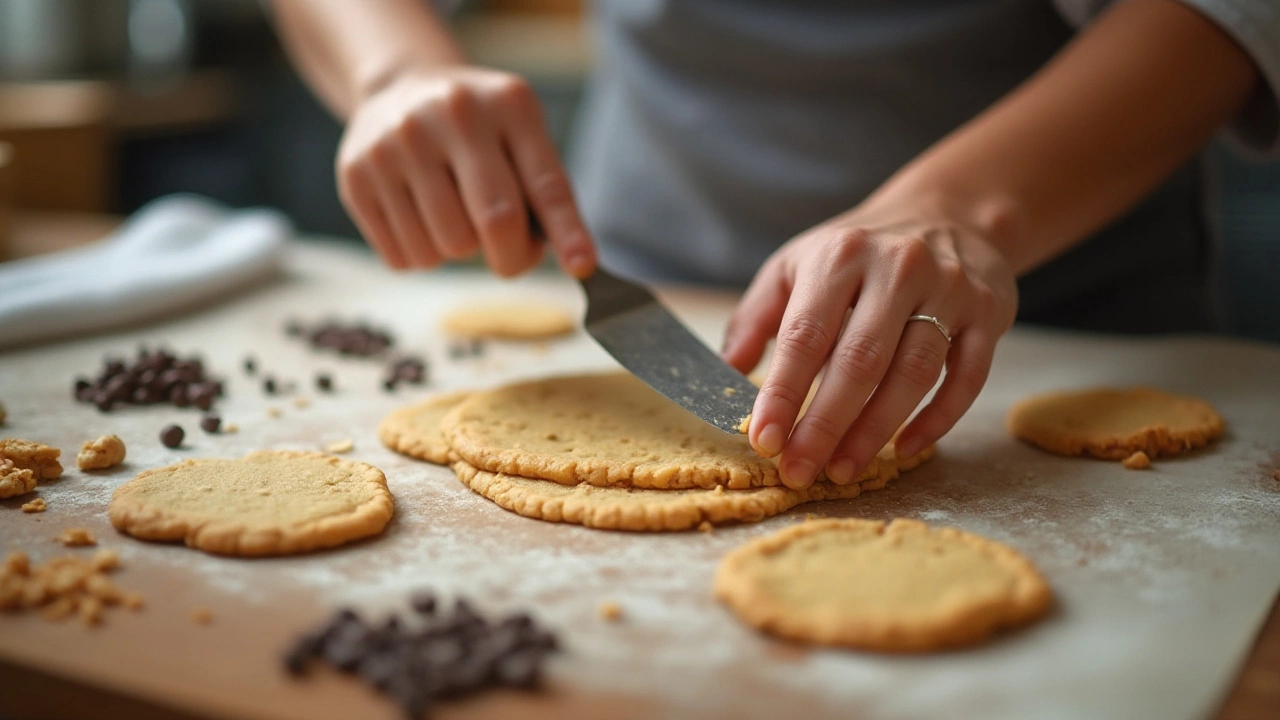
Techniques for Perfect Cookie Texture
Baking the perfect cookie often involves knowing not just what ingredients to use, but how to handle your dough—particularly in the decision to flatten or not. Whether you prefer a chewy bite or a crisp crunch, the technique of flattening your cookies can significantly impact the end result. One essential trick is to adjust the dough temperature before baking. When dough is chilled, the fat in your recipe tends to melt at a slower rate during baking, meaning less spreading of the cookies and a thicker texture. On the other hand, room-temperature dough can encourage a wider spread, resulting in thinner, crisper cookies. These small adjustments in temperature can help you achieve the texture you desire.
Another critical technique involves understanding the role of baking soda and baking powder. While both are leavening agents that add height and fluffiness, they affect the texture differently. Baking soda is ideal for creating a chewier cookie because it allows the dough to spread more while baking. Alternatively, baking powder tends to create a denser, cake-like texture. By experimenting with the amounts of these ingredients, you can tailor your cookies according to your preference. Also, consider the butter-to-flour ratio—more butter can lead to flatter, crisper cookies, while more flour often yields a thicker cookie. It's all about finding that balance based on the texture you are targeting.
Pre-Bake Flattening Tips
When it comes to flattening your cookie dough, there's a handy tip: use the bottom of a glass or a spatula to gently press down on each scoop of dough just before baking. This method encourages even baking and a more uniform shape, as the initial flattening primes the dough to spread consistently in the oven. Some bakers prefer using their hands, offering a slight warmth that prevents dough overspill. An intriguing idea from culinary expert, Maida Heatter, was to sprinkle a pinch of sea salt onto slightly flat dough, enhancing flavor and providing extra texture variation.
"The cookie's shape and texture are not just in the ingredients but in the methods of handling it. Cookie dough is a canvas, and understanding its behavior is part of mastering it," - Maida Heatter.
Additionally, the choice of baking sheet and parchment paper cannot be understated. Darker sheets absorb more heat, possibly causing cookies to bake faster and become crisper, whereas lighter sheets offer a more controlled bake. Using parchment helps prevent sticking, promoting even browning and easier removal without disturbances in the cookie's structure. These simple strategies at the start of your baking process can beautifully refine the texture of your treats.
Lastly, consider a little creative touch with your toppings. Scattering a few nuts or chocolate chips before baking—and gently pressing them into the surface—can not only add texture but also heighten the visual and gustatory appeal of your cookies. Aim for evenly distributed chunks, which not only contribute to perfect_cookie_texture but ensure that every bite delivers a perfect ratio of toppings to dough.
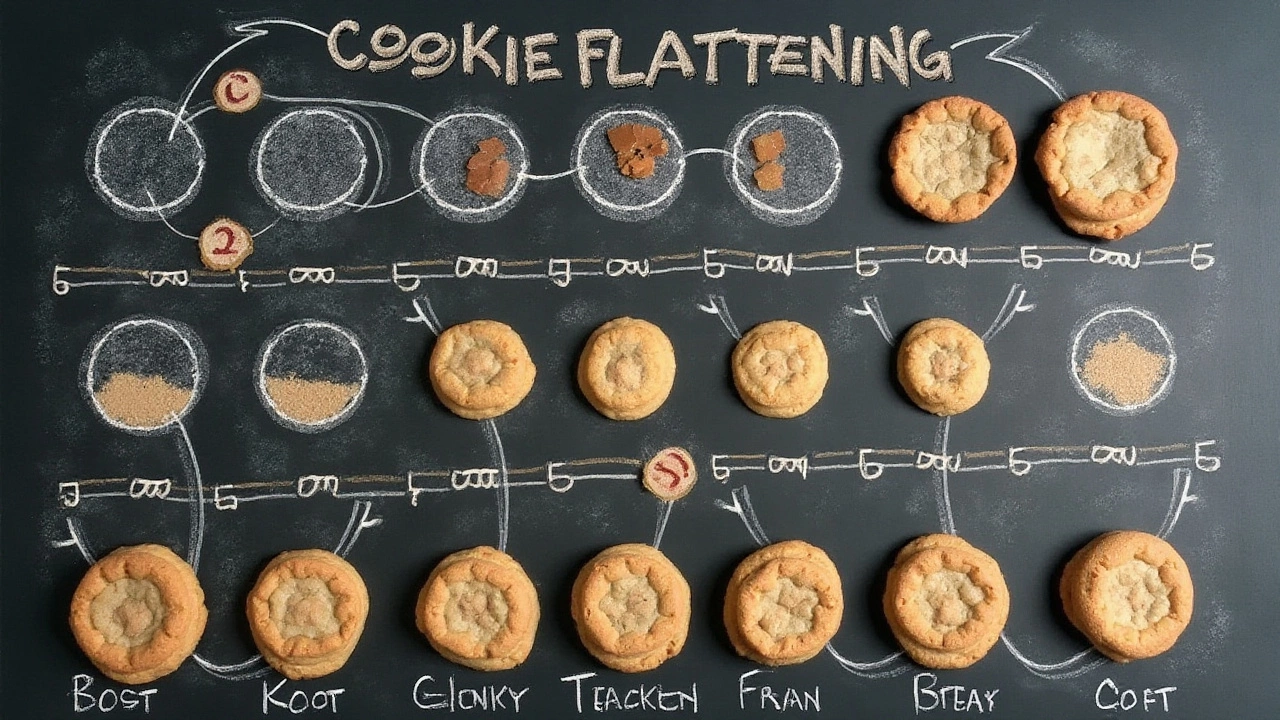
Troubleshooting Common Cookie Issues
Baking cookies is a wonderful journey, but sometimes things don’t go according to plan. The results can be frustrating – perhaps the cookies spread too much, turn out too hard, or seem undercooked. Recognizing these issues is the first step to perfecting your cookie game. One common issue is spreading too much, resulting in wafer-thin cookies. Often, this happens when the dough is too warm and needs chilling before baking. Chilled dough holds its shape better and allows flavors to meld. It's also worth checking if your cookie sheets are too warm; let them cool between batches or use fresh ones.
On the other hand, cookies that turn out too hard might be a result of overbaking. Remember that cookies continue cooking on the sheet after being removed from the oven. Another culprit might be using too much flour – always measure using the spoon and level method, avoiding packing it into the measuring cup. Crispness, while desirable in certain cookies, isn't for everyone. Consider adjusting your oven temperature if this is a frequent issue, as some ovens can run hotter than the set temperature. A quick thermometer check can be revealing.
If your cookies feel disappointingly soft or undercooked, it's essential to let them stay on the baking sheet for a few minutes after baking. This technique allows them to firm up without overcooking. Once again, the balance of ingredients plays a major role: too much sugar can lead to spreading and excess softness, while insufficient leavening agents can contribute to a cakey texture. Don’t shy away from experimenting with ingredient ratios to achieve the perfect homemade cookies.
"The ideal cookie should have that magical balance of chewiness, crispness, and flavor." – America’s Test Kitchen
Lastly, an unevenly baked batch may point to an overcrowded baking sheet or uneven rolling of dough ball sizes. Always give your cookies room to breathe and enough space to expand. An evenly spaced tray can make a surprising difference. If possible, rotate your tray midway through baking to ensure even cooking, especially if your oven has hot spots—those pesky areas that can make the cookies on one side of the tray bake faster.
Tackling these common cookie conundrums is part of the baking learning curve. With each batch, note what works and what doesn’t. Soon, you’ll find yourself in harmony with your kitchen, and perfecting that art of baking homemade cookies. Remember, baking is as much about the journey as it is about the tasty destination, and each mishap is just another step towards mastering your technique.

